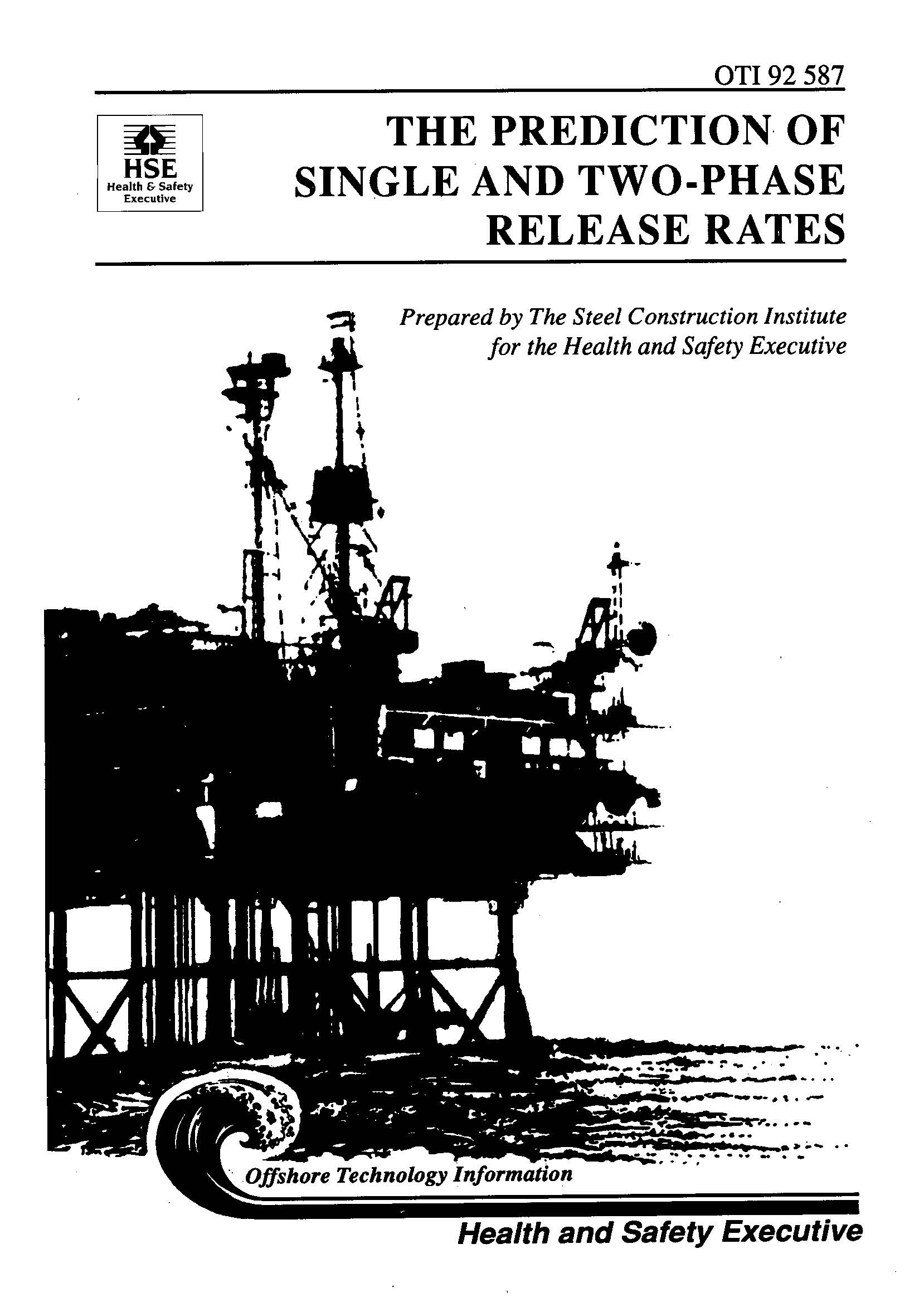HSE OTI 92 587
The prediction of single and two-phase release rates
Work Package G1(c)
BFETS Phase 1

FABIG Members: Log-in to access all FABIG resources LOG IN
SUMMARY
This report summarizes and reviews information that is relevant to the prediction of the rate of release of material from vessels or pipework on offshore structures. The information contained in it has been obtained through searches in the open literature, by direct submissions from the organizations participating in the project and also following direct contacts with research workers or organizations known to be active in this field.
The limited brief of this survey was to consider releases through holes or punctures with a diameter of up to 100 mm in pipework or vessels containing pressurized gases or liquids. The calculation of the mass flowrate from such releases marks the first step in an assessment of the likely consequences of a release on an offshore structure. Together with a description of the thermodynamic and dynamic state of the material, it provides all the source information required for the subsequent dispersion, fire or explosion calculations. Given the uncertainties involved in these calculations and also the hypothetical nature of the source of the leak, it is probably sufficient to estimate the rate of release itself to an accuracy of 25%. However, it is important that the correct nature of the flow is identified, so that the subsequent consequence models are applied correctly.
As an example, if a release of unestablished condensate occurs, it is important to know whether the release is composed of vapor or liquid or a 'two-phase' mixture of both. Assuming all the material is released in the form of a homogeneous jet, when in reality liquid droplets are falling to the floor, would mean that the following calculations were of doubtful validity. Hence, in this report, particular attention is given to the nature of the likely flows.
The uncertainties involved in predicting two-phase flows are highlighted. It is seen that if the nature of the flow is known, then a range of simple methods are available to predict the behaviour of the release. However, there appears to be a lack of guidance to allow non-specialist engineers to choose the correct flow model in any given situation. This could be provided in the form of an expert system, tailored for the specific needs of an offshore operator.
At a more fundamental level, there is also a lack of base data on how multi-component systems behave, in particular if there are any non-volatile components or other contaminants present. Such information would help augment the information base for any expert system, as well as provide the further data necessary to help guide the development of more complex mathematical models.
The full report is publicly available from the HSE Website at www.hse.gov.uk/research/otipdf/oti92587.pdf.
Online purchase options:
Non-Members of FABIG are able to purchase PDF copies of the reports.